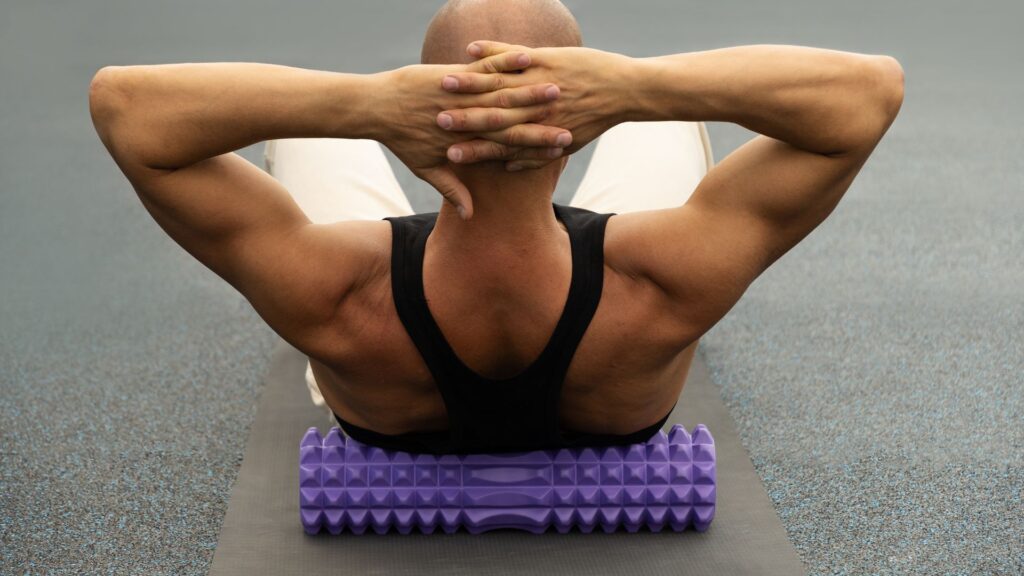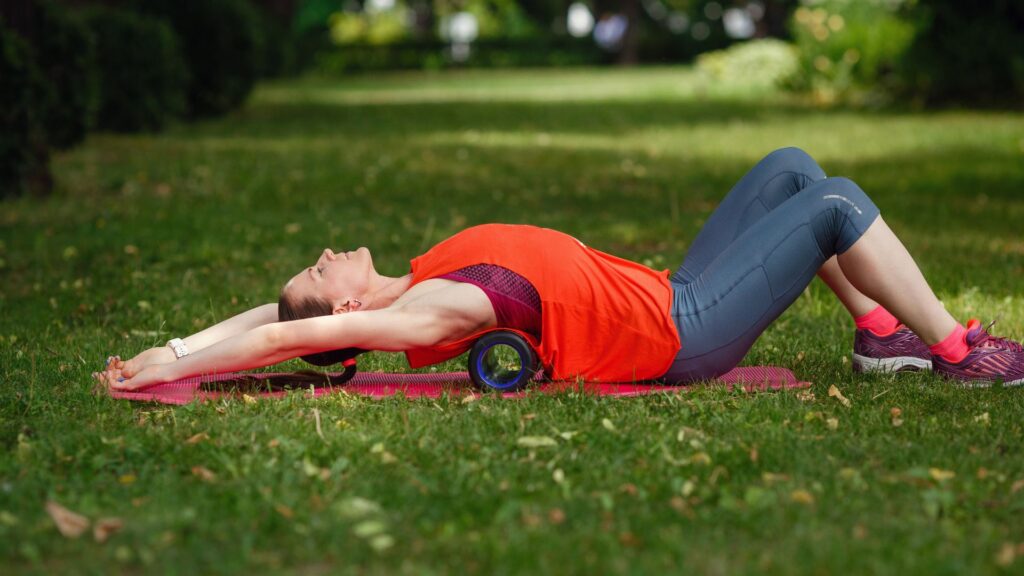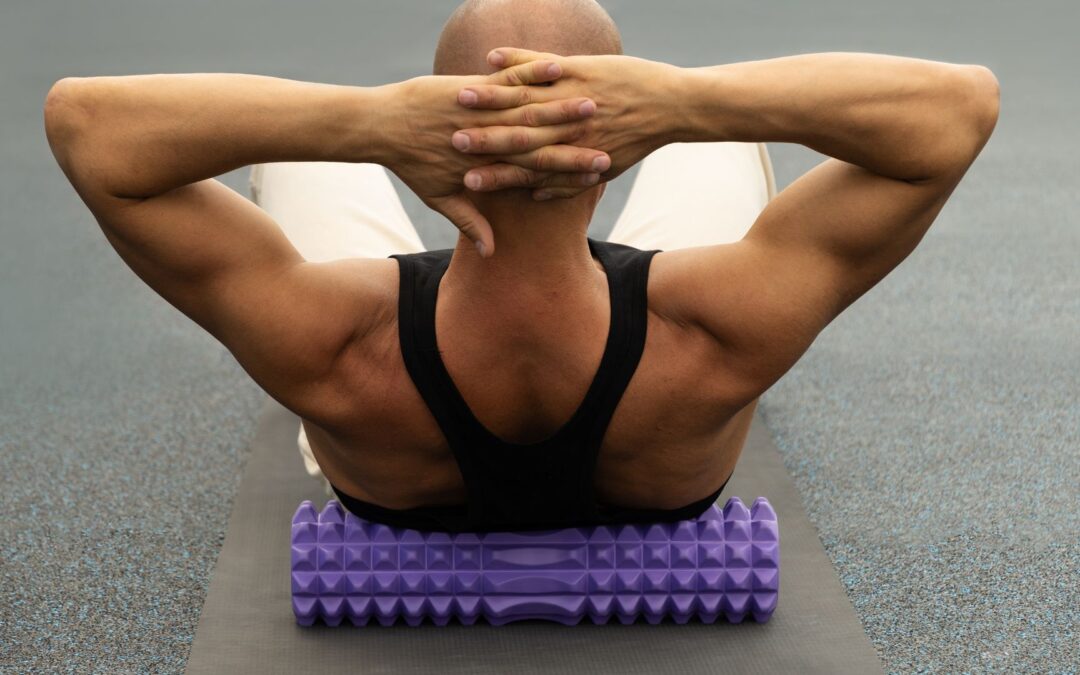
Before using a foam roller, review My First Visit guidelines to ensure safety. Mid-back (thoracic spine) tightness is common, especially for people who sit for long hours, hunch over devices, or perform repetitive upper body activities. A foam roller can be an effective tool to release tension, improve mobility, and enhance posture.
Understanding Mid-Back Anatomy
The thoracic spine consists of 12 vertebrae connecting the neck and lower back. Key structures include:
- Thoracic vertebrae (T1–T12) – provide structural support
- Rhomboids and trapezius muscles – retract and stabilize the shoulder blades
- Erector spinae muscles – support spinal extension and posture
- Intercostal muscles – assist with rib movement and breathing
Mid-back tightness often occurs from poor posture, muscle imbalance, or prolonged sitting, leading to discomfort, restricted movement, and even upper back pain radiating to the shoulders.
Benefits of Foam Rolling
- Releases tight muscles and fascia
- Improves thoracic spine mobility
- Enhances circulation and nutrient delivery to tissues
- Reduces compensatory strain on the cervical and lumbar spine
- Complements chiropractic adjustments for long-term spinal health
Foam Roller Techniques for Mid-Back
1. Basic Thoracic Roll
- Sit on the floor, place foam roller horizontally under mid-back
- Cross arms over chest, lift hips off the ground
- Roll slowly from the base of the neck to the lower thoracic region
- 10–15 slow passes
Tip: Avoid rolling directly on the lower back; focus on the thoracic spine.
2. Shoulder Blade Release
- Place the roller under the upper thoracic spine
- Extend arms overhead to stretch the chest
- Slowly roll back and forth, allowing shoulder blades to glide over the muscles
- 8–10 repetitions
Benefit: Opens the chest and relieves tightness in the upper back.
3. Twist with Foam Roller
- Lie on the roller perpendicular to your spine
- Gently rotate your upper body side to side
- Keep hips stable to target thoracic rotation
- 5–8 reps per side
Benefit: Enhances rotational mobility and reduces stiffness in daily movements like reaching or turning.
4. Scapular Mobilization
- Position roller under the mid-back
- Lift arms in a “goalpost” position
- Focus on rolling between the shoulder blades
- 8–10 reps
Benefit: Activates rhomboids and trapezius while relieving tension caused by desk work.
Safety and Best Practices
- Start with short sessions (2–3 minutes) and gradually increase
- Roll slowly to avoid bruising or irritation
- Avoid the lower back; the lumbar spine is not ideal for direct rolling
- Maintain proper posture and core engagement
- Stop if you feel sharp pain or numbness

Integrating Foam Rolling With Chiropractic Care
Chiropractors often recommend foam rolling as a complementary therapy:
- Prepares muscles and fascia for spinal adjustments
- Reduces postural strain that contributes to misalignments
- Enhances spinal mobility for better adjustment outcomes
A combination of foam rolling and chiropractic care maximizes results for mid-back health, posture, and pain relief.
Final Thoughts
Foam rolling is a simple, effective method to relieve mid-back tightness and improve thoracic mobility. Incorporate these techniques into your daily routine for better posture, reduced pain, and enhanced spinal function.
Ready to take the next step in spinal care? Schedule your consultation through Contact or Visit.
